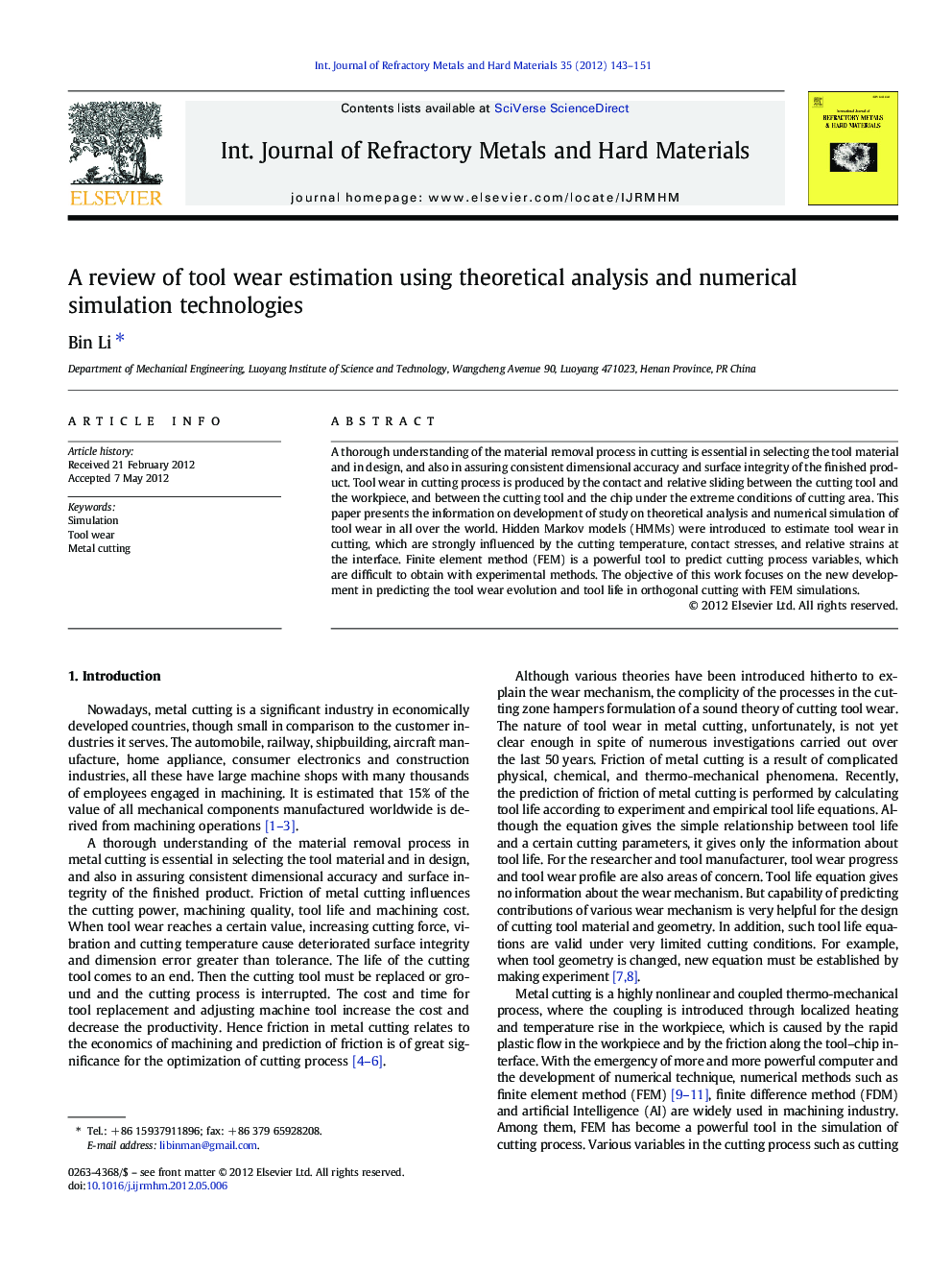| Article ID | Journal | Published Year | Pages | File Type |
|---|---|---|---|---|
| 1603517 | International Journal of Refractory Metals and Hard Materials | 2012 | 9 Pages |
A thorough understanding of the material removal process in cutting is essential in selecting the tool material and in design, and also in assuring consistent dimensional accuracy and surface integrity of the finished product. Tool wear in cutting process is produced by the contact and relative sliding between the cutting tool and the workpiece, and between the cutting tool and the chip under the extreme conditions of cutting area. This paper presents the information on development of study on theoretical analysis and numerical simulation of tool wear in all over the world. Hidden Markov models (HMMs) were introduced to estimate tool wear in cutting, which are strongly influenced by the cutting temperature, contact stresses, and relative strains at the interface. Finite element method (FEM) is a powerful tool to predict cutting process variables, which are difficult to obtain with experimental methods. The objective of this work focuses on the new development in predicting the tool wear evolution and tool life in orthogonal cutting with FEM simulations.
► Hidden Markov models (HMMs) were introduced to estimate tool wear in cutting, which are strongly influenced by the cutting temperature, contact stresses, and relative strains at the interface. ► The simulations using a cutting tool with constantly updated rake face and flank face geometries have shown that it is possible to predict the evolution of tool wear at any given cutting time from FEM simulations by using the methodology proposed in this study. ► As the chip flow and tool temperature solutions were obtained in two separate phases, the process variables for the chip-workpiece and the tool had to be combined by an external program to display the results in their entirety in the post-processor.
